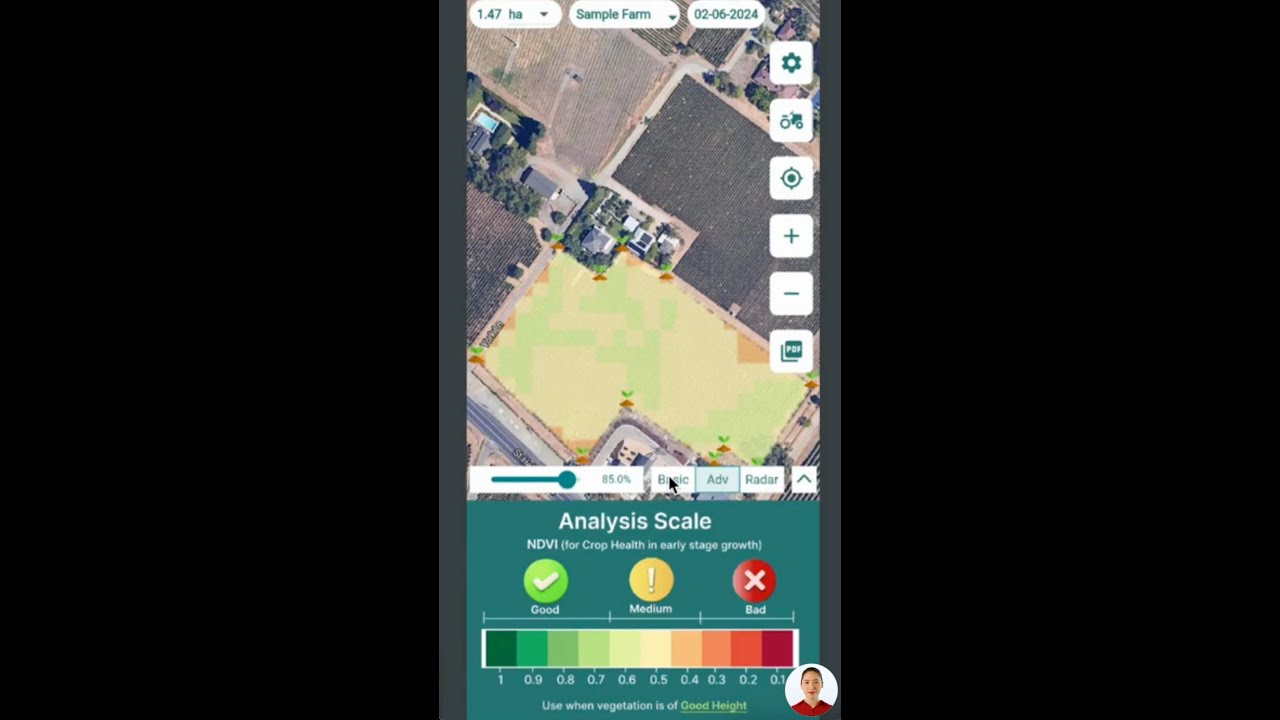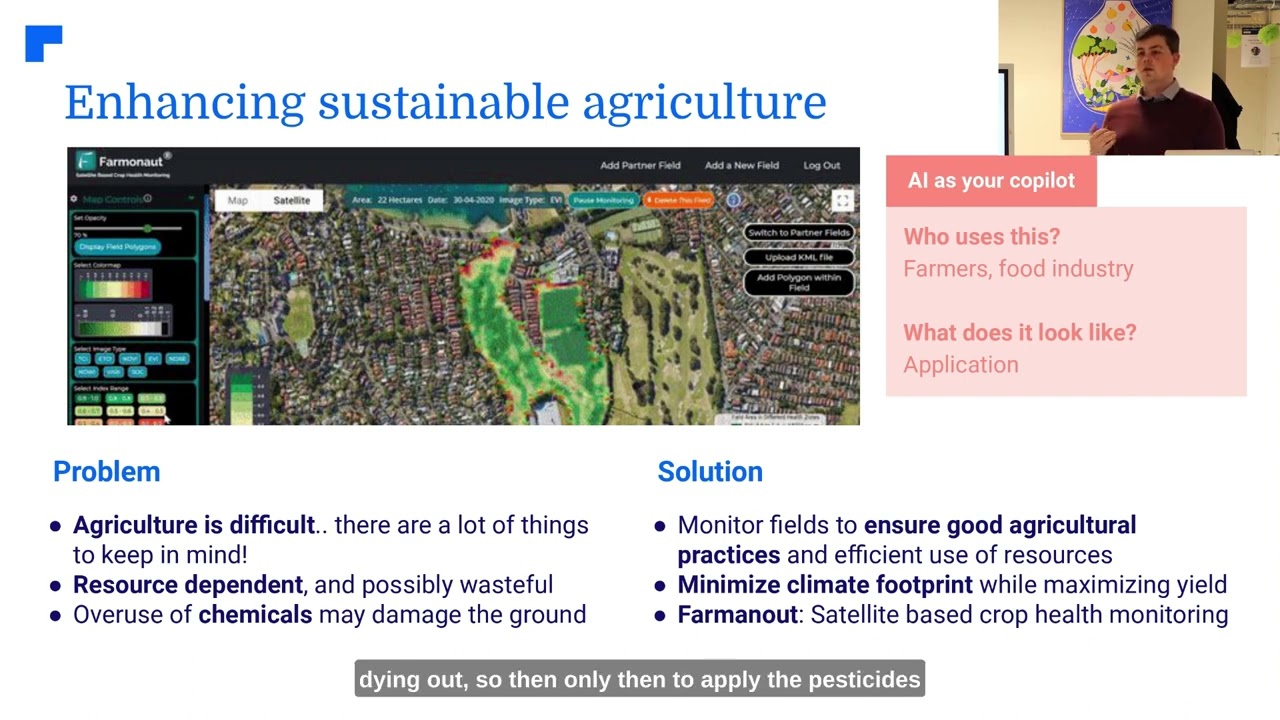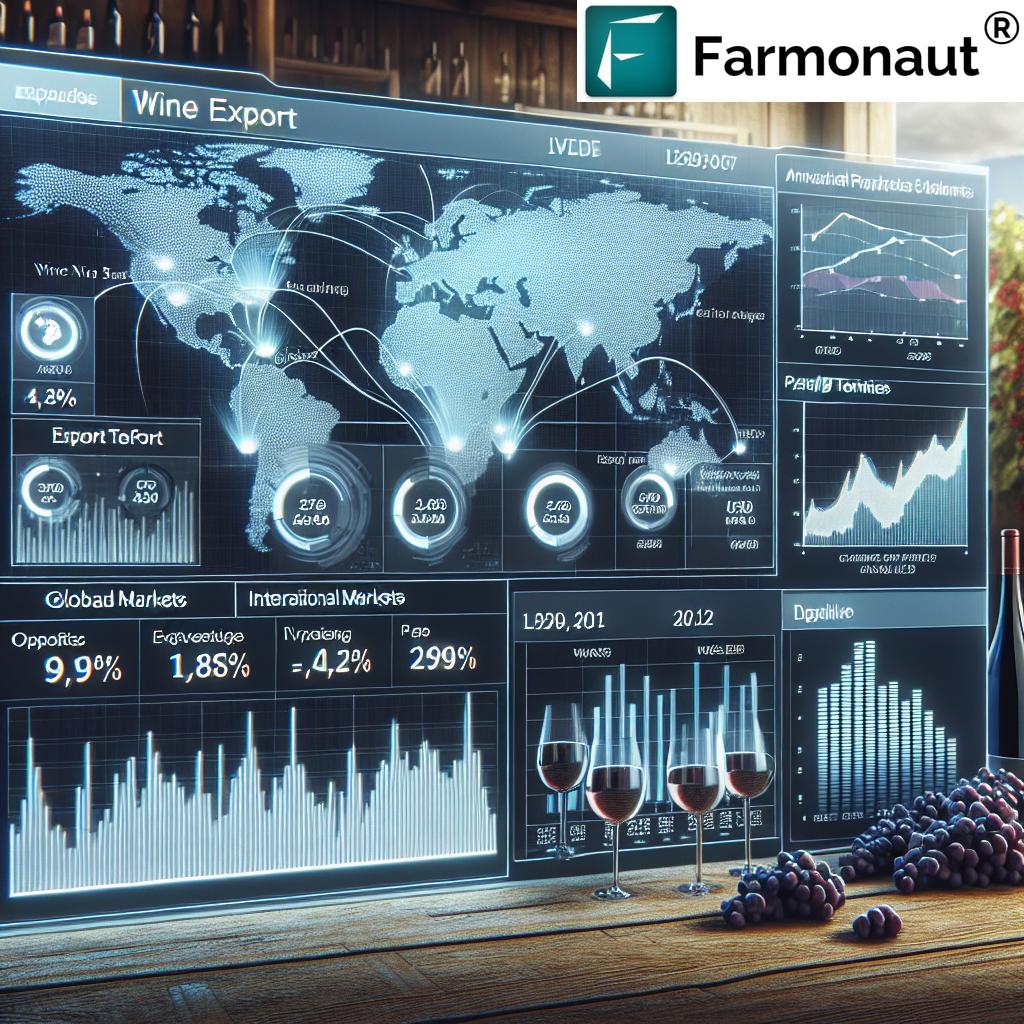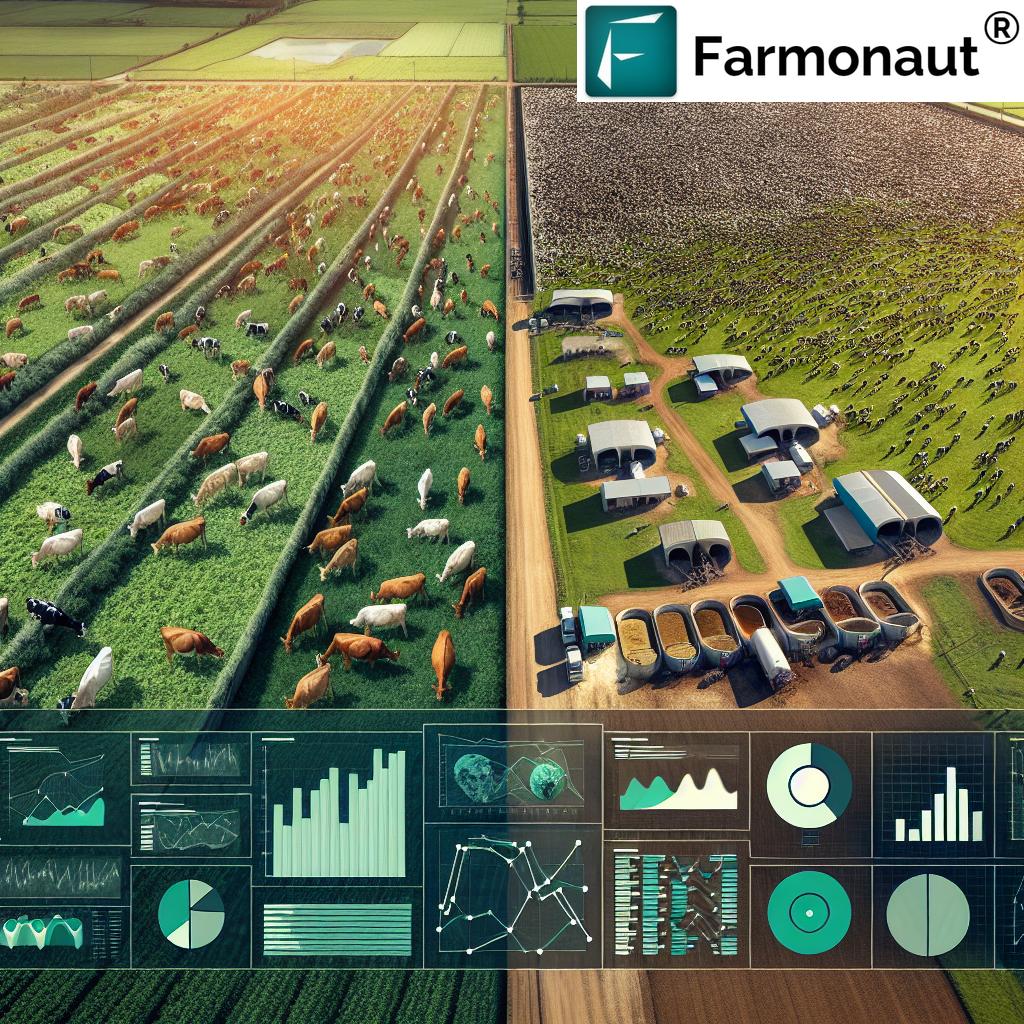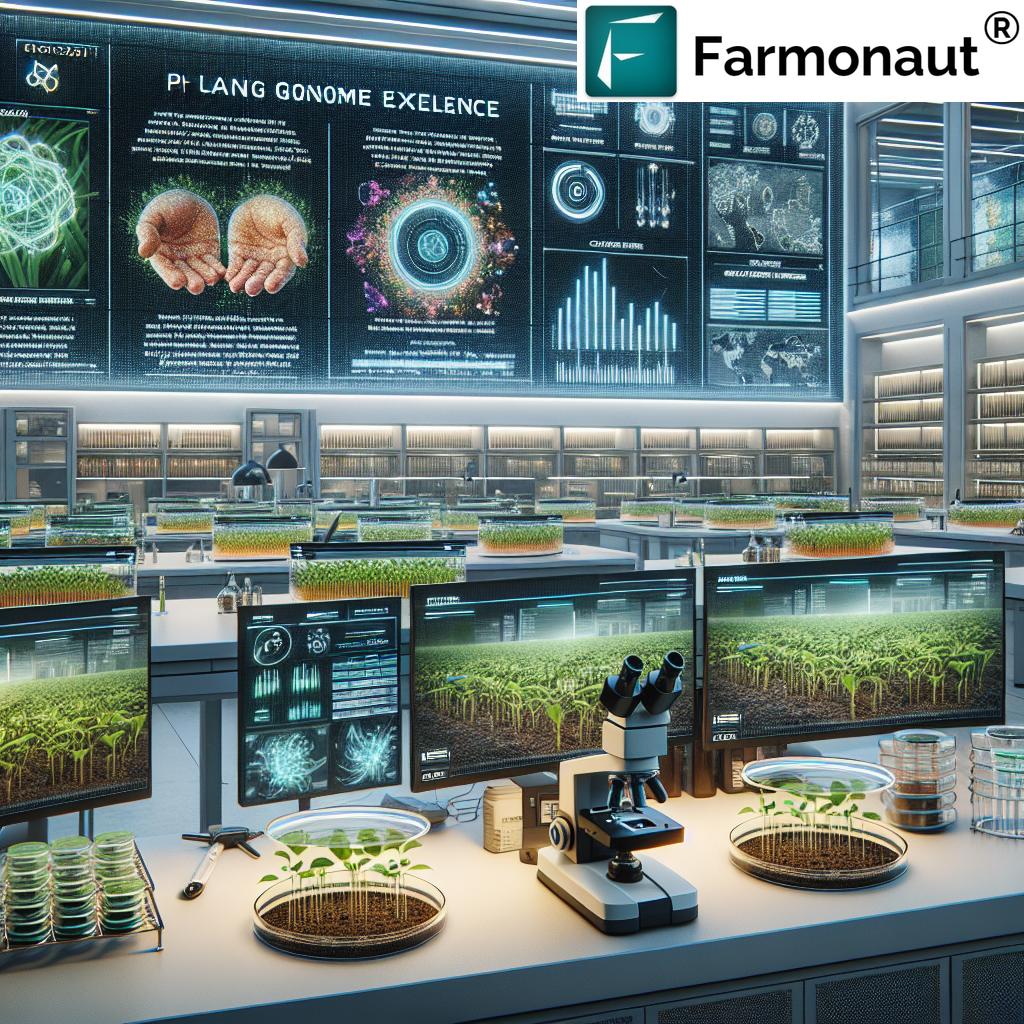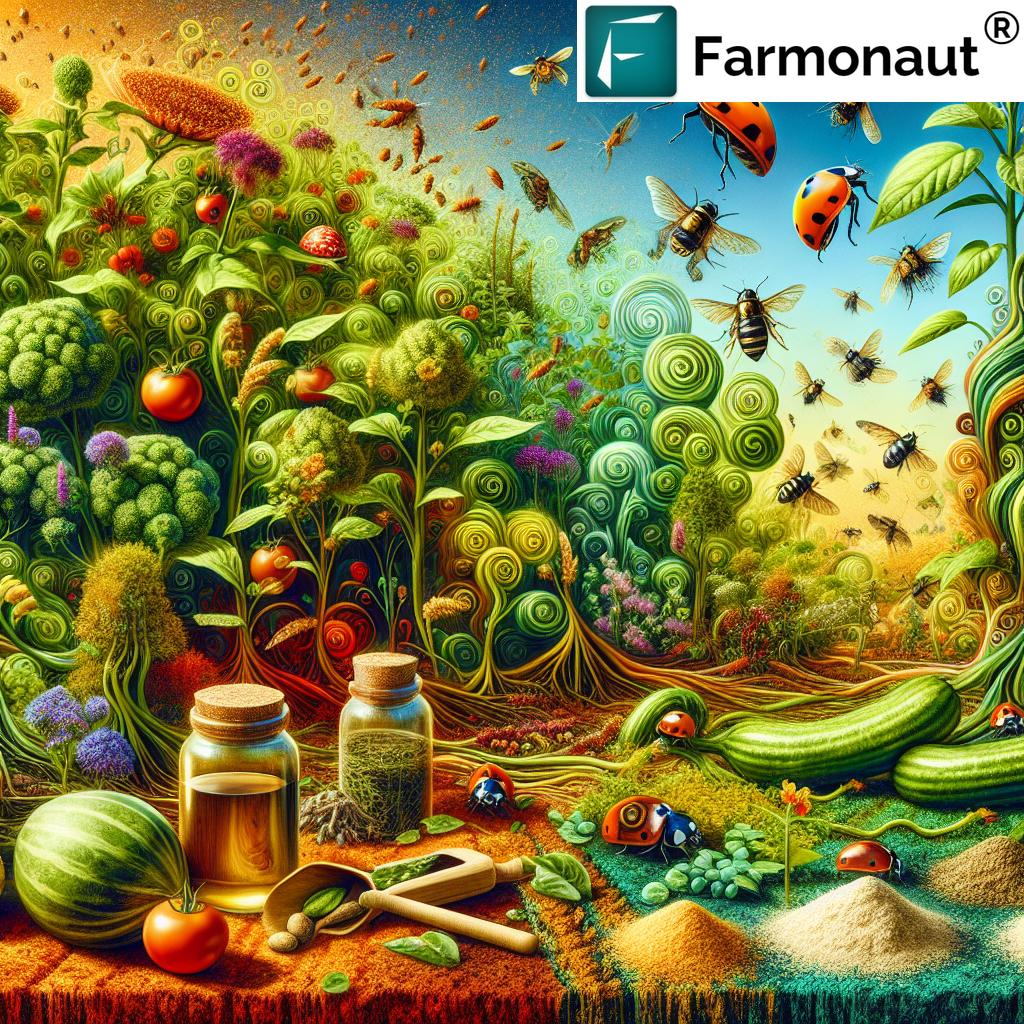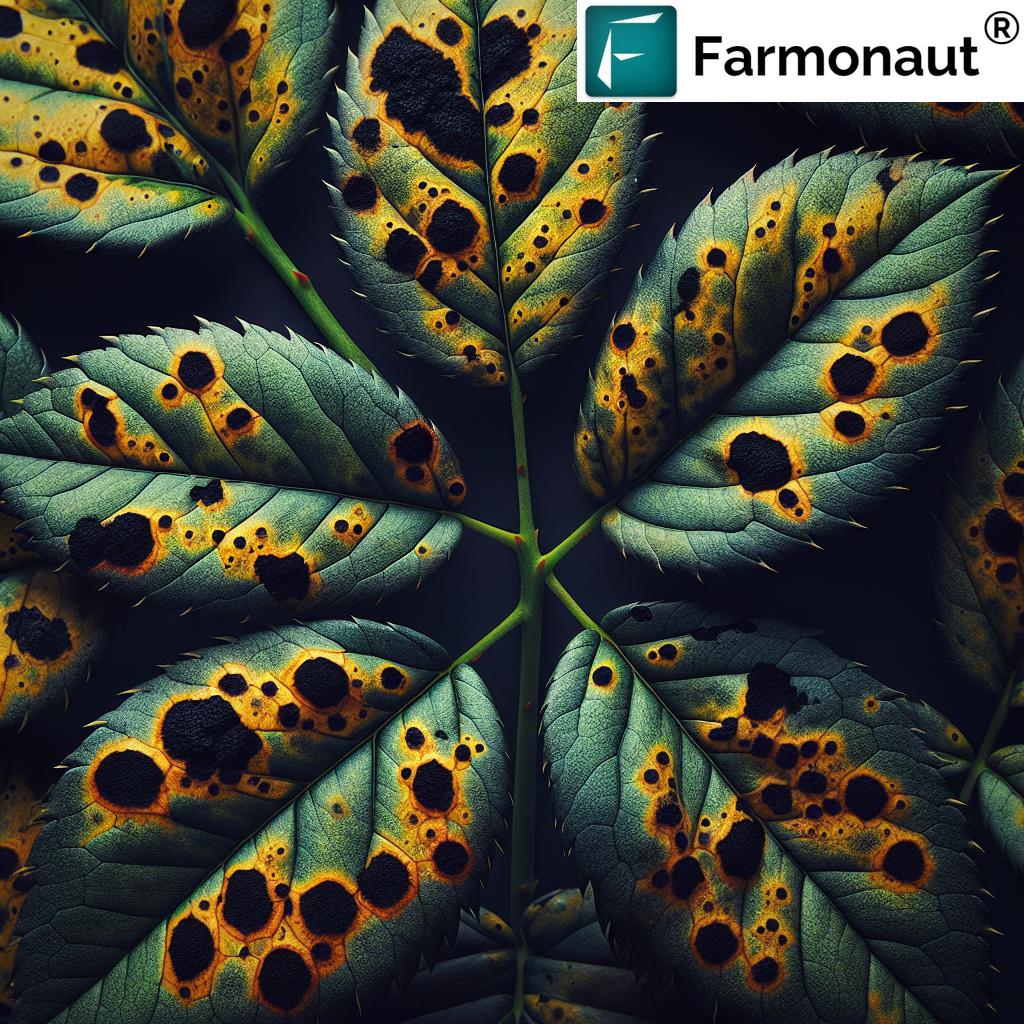7 Eco-Friendly Pest Methods Farmers Swear By!
Table of Contents
- Introduction
- Benefits of Eco-Friendly Pest Control Methods
- 7 Eco-Friendly Pest Control Methods
- Indigenous & Traditional Pest Control Methods
- Comparison Table of Eco-Friendly Pest Control Methods
- Challenges & Considerations in Sustainable Pest Management
- How Farmonaut Supports Eco-Friendly Pest Control
- Frequently Asked Questions
- Conclusion
“Over 60% of farmers using eco-friendly pest methods report a 40% reduction in chemical pesticide use.”
Introduction: Why Eco-Friendly Pest Methods are Transforming Agriculture
As we move further into the 21st century, sustainable pest management is no longer an option—it’s a necessity. Modern agriculture, farming, and forestry face enormous pressure to protect biodiversity, improve crop yield, and reduce chemical pesticide use.
Eco-friendly pest control methods enable us to manage pest populations effectively while minimizing environmental impact, promoting healthy ecosystems, and helping safeguard the future of farming. In this detailed guide, we’ll share the seven most effective and natural pest control solutions that farmers around the world rely on.
These sustainable pest management strategies leverage natural processes and innovative techniques—often combining modern science with age-old wisdom—to reduce reliance on chemical pesticides and support regenerative, environmentally friendly farming practices.
The Benefits of Eco-Friendly Pest Control Methods
Eco-friendly pest control is essential in modern agriculture, farming, and forestry. Here are some of its remarkable benefits:
- Environmental Protection: Reduces environmental pollution by minimizing the use of toxic chemicals, and preserves beneficial organisms in the ecosystem.
- Human Health: Minimizes our exposure to harmful chemical pesticides, resulting in safer food production and rural working conditions.
- Sustainability: Supports long-term agricultural productivity and resource conservation by using natural pest control solutions.
- Biodiversity Conservation: Maintains ecological balance by protecting helpful insects, birds, and microorganisms.
- Cost Effective: Many eco-friendly strategies can lead to significant savings by reducing input costs over time.
7 Eco-Friendly Pest Control Methods that Truly Work
Let’s explore the proven eco-friendly pest control methods that are widely adopted in sustainable agriculture and environmentally friendly farming practices. Each method below helps reduce chemical pesticide use, enhance biodiversity, and promote natural pest control.
“Natural predators can control up to 80% of common crop pests, supporting sustainable agriculture.”
1. Integrated Pest Management (IPM): The Holistic Approach
Integrated Pest Management (IPM) sits at the heart of sustainable pest management. Instead of depending on a single solution, IPM combines biological, cultural, physical, and—only as a last resort—chemical tools to effectively control pest populations.
Key Elements of IPM:
- Monitoring: Regular surveillance of pest levels and crop health, often using advanced tools like satellite imagery for precision agriculture.
- Setting Action Thresholds: Defining the point at which pest populations will cause economic harm and require intervention.
- Combining Multiple Methods: Utilizing a flexible mix of crop rotation, biological controls, physical barriers, and, when needed, targeted interventions with suitable chemicals.
By emphasizing monitoring, setting thresholds, and implementing minimal-impact solutions first, IPM protects our crops while supporting the environment and human health. Don’t miss the power of real-time AI-based crop monitoring platforms like Farmonaut, which empower us to detect early signs of pest outbreaks, monitor vegetation health (NDVI), and enhance our integrated pest management strategies with data-driven insights!
2. Biological Pest Control: Leveraging Nature’s Own Defenders
Biological pest control involves using natural organisms—predators, parasitoids, and pathogens—to manage pest populations.
Examples of Biological Control:
- Introducing Ladybugs: These voracious insects feed on aphids and other crop pests. A single ladybug larva can devour up to 40 aphids every hour!
-
Releasing Bacillus thuringiensis (Bt): This soil-dwelling bacterium produces toxins harmless to most wildlife but deadly to certain insect larvae, such as Lepidopteran caterpillars.
(Learn more about Bt: Wikipedia – Bt) - Encouraging Predatory Wasps and Parasitoids: These beneficial insects parasitize pest insects, reducing infestations naturally.
- Using Fungi and Viruses: Certain pathogens specifically attack insect pests while being safe for people, plants, and wildlife.
Maintaining biodiverse habitats near crop fields with insectary plants, hedgerows, and water sources can attract and support beneficial organisms. This reduces reliance on synthetic chemicals and promotes a robust, healthy ecosystem.
3. Cultural Pest Control Methods: Shaping the Farm for Pest Resistance
Cultural pest management techniques involve altering the environment and farm practices to disrupt conditions that favor pest populations.
Major Cultural Controls Include:
- Crop Rotation: Switching crops seasonally interrupts pest life cycles and reduces soil-borne pest populations.
- Intercropping: Planting a mix of crops together, which confuses pests and limits the spread of infestations.
- Selecting Resistant Plant Varieties: Using pest-resistant varieties helps crops withstand common insect and disease threats.
- Sanitation: Removing plant debris and weeds that harbor pests and pathogens.
By modifying the environment to make it less conducive to pests, we can dramatically reduce infestations—often without any negative impact on beneficial insects or the environment.
4. Physical and Mechanical Control: Barriers & Direct Removal
Physical and mechanical control methods involve physically removing pests or creating barriers to prevent their access to crops.
Techniques Include:
- Row Covers: Using lightweight fabric or mesh to protect plants from flying insects and birds.
- Installing Traps: Employing sticky traps, pheromone traps, or light traps to capture insect pests or monitor population levels.
- Mulching: Laying organic or synthetic materials around plants to deter soil-borne pests and suppress weed growth.
- Hand Removal: Physically removing large pests or their egg masses from crops—especially effective in small-scale or organic farming systems.
- Creating Barriers: E.g., copper tape to deter snails/slugs, or boards and bands on fruit trees to prevent crawling insects.
- Soil Tilling: Disrupts overwintering habitats of certain pests.
These non-toxic approaches are highly effective when implemented correctly, and leave no harmful residues. Combined with AI-powered monitoring, we can deploy these controls precisely where and when they’re needed.
5. Botanical & Natural Pesticides: Harnessing Nature’s Chemistry
Botanical pesticides for agriculture are organic pest control practices that use extracts from plants with natural insecticidal or repellent properties. These products offer a safer alternative to synthetic chemicals, especially when targeting soft-bodied pests like aphids and whiteflies.
Popular Botanical and Natural Products:
-
Neem Oil: Acts as both a repellent and a growth disruptor to various pests including aphids, mealybugs, and whiteflies.
Widely used in India as part of both organic and indigenous pest management. - Pyrethrin: Derived from chrysanthemum flowers, this natural insecticide quickly knocks down and kills many insect species but breaks down rapidly, making it less harmful to the environment compared to synthetic alternatives.
- Other Useful Botanicals: Garlic, chili, and soap sprays also act as deterrents and can be used in rotation to reduce pesticide resistance.
While botanical pesticides are less toxic to humans and beneficial insects, we must still apply them with care. For approved organic production, check that products are certified.
6. Push–Pull Strategy: Smart Field Layout for Sustainable Pest Management
The push–pull strategy is an innovative natural pest control solution based on intercropping and trap cropping.
The principle: use “push” plants that repel key pests from the main crop, and “pull” plants that attract and trap those pests away from valuable plantings.
Example: Maize & Stem Borers in Africa
- Desmodium: Planted between maize rows, this leguminous “push” plant repels stem borer moths and suppresses Striga weed infestations.
- Napier Grass: Planted along the edge of the field, this “pull” plant attracts and traps stem borers.
- Double Benefit: Both crops can also be harvested for animal fodder, and Desmodium fixes nitrogen to enhance soil fertility.
This strategy reduces pest damage and boosts soil health, forming a classic win-win of eco-friendly pest control methods and sustainable agriculture.
7. Biosolarization: Powering Pest Control with Sun and Microbes
Biosolarization brings together organic amendments, soil solarization, and the power of microbes to manage soil-borne pests and diseases sustainably.
How Biosolarization Works:
- Prepare the Soil: Apply compost, manure, or other organic material to soil, then irrigate to field capacity.
- Cover: Lay clear plastic sheets over the prepared, moist soil—trapping solar heat beneath.
- Incubate: Let the temperature rise for several weeks—we often see soil reach levels that kill nematodes, weed seeds, and pathogens.
- Microbial Action: The decomposition process fueled by local microbes generates additional heat and by-products toxic to target pests.
Biosolarization is eco-friendly, cost-effective, and reduces the need for chemical fumigants. It can be especially valuable in areas with strong, sunny seasons and is increasingly used on vegetable and horticultural crops.
Indigenous & Traditional Pest Control Methods
Traditional pest control methods passed down for generations continue to be integral aspects of organic pest control practices worldwide, especially in countries like India.
Examples from India:
- Neem-Based Sprays: Used both for their botanical insecticide properties and cultural familiarity, these natural extracts help control aphids, whiteflies, and scale insects.
- Marigold Border Planting: Marigolds are often planted around vegetable fields; not only do they attract and trap nematodes and aphids, they support pollinator populations.
- Chili-Garlic Sprays: Locally prepared from available resources, these mixtures deter caterpillars, beetles, and sucking pests.
Comparison Table of Eco-Friendly Pest Control Methods
| Method Name | Description | Primary Target Pest(s) | Application Technique | Estimated Reduction in Chemical Use (%) | Cost Savings per Hectare (USD, estimated) | Biodiversity Impact |
|---|---|---|---|---|---|---|
| Integrated Pest Management (IPM) | A holistic approach combining multiple control strategies and action thresholds. | Multiple pests (insects, weeds, diseases) | Monitoring, rotating methods as needed | Up to 60% | $50–100 | High |
| Biological Pest Control | Using natural enemies (predators, parasitoids, pathogens) to reduce pest populations. | Aphids, caterpillars, beetles, soil pests | Introducing or attracting beneficials, applying biocontrol agents | Up to 80% | $70–150 | High |
| Cultural Pest Control | Modifying practices (rotation, varietal selection, sanitation) to disrupt the pest environment. | Soil pests, insects, weeds, certain diseases | Crop rotation, resistant varieties, intercropping | 30–50% | $30–90 | Medium–High |
| Physical & Mechanical | Physical barriers and direct pest removal. | Insects, slugs, rodents, birds | Row covers, traps, barriers, hand removal | 40–65% | $30–80 | Medium–High |
| Botanical & Natural Pesticides | Pesticides derived from plants or other natural substances. | Aphids, mites, caterpillars, beetles | Neem oil, pyrethrin, homemade sprays | 35–50% | $20–60 | Medium |
| Push–Pull Strategy | Companion planting with repellent and trap crops. | Stem borers, nematodes, certain sucking insects | Field layout, planting Desmodium, Napier grass | 50–70% | $40–100 | High |
| Biosolarization | Soil solarization combined with organic amendments to kill soil-borne pests. | Nematodes, weed seeds, fungal pathogens | Plastics + compost/manure + sun exposure | 40–60% | $35–80 | High |
How Farmonaut Empowers Sustainable & Eco-Friendly Pest Control
We believe data-driven decision making is the key to effective, eco-friendly pest control methods. Farmonaut offers a revolutionary suite of farm management tools through its Android, iOS, web, and API solutions—enabling farmers to transition to sustainable pest management with confidence.
- Satellite-Based Crop Health Monitoring: Farmonaut uses up-to-date multispectral satellite imagery to identify crop stress and pest damage—helping guide timely, targeted interventions.
- AI Advisory System (Jeevn): Receive real-time, personalized advice on crop management and pest thresholds, empowering informed action and reducing unnecessary pesticide applications.
- Blockchain Traceability: Prove the quality and eco-friendly origin of your produce all along the supply chain (see details).
- Resource Management: Through satellite data and AI, Farmonaut helps optimize irrigation, fertilizer, and pest management practices for greater sustainability.
- Integration & Scalability: From small family farms to large agribusinesses and government agencies, Farmonaut makes precision agriculture accessible and affordable. Its open API (view API) allows seamless integration into third-party systems—see API developer docs.
- Carbon Footprint Tracking: Quantify the environmental benefits of switching to sustainable pest management (read more).
- Fleet & Asset Management: Improve efficiency and safety on large farms or agri-businesses (fleet solutions).
Farmonaut is not a marketplace or equipment seller—we provide advanced analytical and management solutions to empower farmers and agronomists to adopt and optimize eco-friendly pest control at every scale.
Farmonaut Subscription Plans — Scalable, Affordable Solutions
Join thousands of progressive farmers adopting precision agriculture and eco-friendly pest control methods with Farmonaut’s flexible subscription packages:
Frequently Asked Questions: Eco-Friendly Pest Control Methods
What are the main advantages of eco-friendly pest control?
- Sustainable and reduces environmental pollution
- Protects beneficial organisms and supports biodiversity
- Leads to cost savings and reduces chemical pesticide use
- Improves food safety and long-term productivity
How can I start using sustainable pest management in my farm?
Begin with basic monitoring—identify major pests, set action thresholds, and gradually introduce methods like crop rotation, cultural/biological controls, and AI-based advisory tools. Digital platforms like Farmonaut can help streamline implementation and record-keeping.
Are botanical pesticides for agriculture as effective as chemical pesticides?
When used appropriately, botanical pesticides can be very effective on many target pests—for example, neem products against aphids or pyrethrin sprays on beetles. However, their efficacy is usually lower than strong chemicals, so they are best used as part of an integrated approach and with good timing.
What is the environmental impact of biosolarization?
Biosolarization has a high positive environmental impact, as it harnesses solar energy and organic decomposition to kill pests without leaving toxic residues. It also helps reduce pathogens and weed seeds in soil.
Can I use these methods on organic-certified farms?
Yes! All the methods listed above (including approved biocontrol agents and botanical pesticides) are aligned with organic standards. Always check product certifications and local regulation for compliance.
How does Farmonaut support eco-friendly pest management?
Farmonaut provides real-time crop health monitoring, AI-based pest advisory, traceability, and carbon tracking—offering precision data to implement, track, and optimize sustainable pest control practices.
Challenges and Considerations for Eco-Friendly Pest Control Methods
- Knowledge and Training: Successful adoption of these methods requires ongoing education and adaptation from farmers and advisors.
- Initial Costs: While eco-friendly systems can be less expensive over time, startup costs for certain tools (e.g., nets, tunnels, biocontrol releases) may be higher.
- Monitoring and Record-Keeping: Vigilant pest monitoring is essential for maximum effectiveness, but can be labor-intensive without smart platforms.
- User Perceptions: It can take time for communities to trust new or alternative pest management approaches versus traditional chemical methods.
- Variable Efficacy: Some methods, especially biocontrol, depend on local pest and weather conditions—requiring tailored solutions and regular evaluation.
Despite these challenges, the long-term benefits of eco-friendly pest control methods—from environmental conservation and economic savings to healthier food—make these approaches increasingly vital in modern agriculture. The integration of technological tools like Farmonaut can streamline monitoring, reduce knowledge gaps, and scale adoption.
Conclusion: Cultivating the Future of Sustainable Pest Management
Eco-friendly pest control methods are helping us lead a new era of farming—one that aligns productivity with the principles of environmental conservation, safety, and resilience. From integrated pest management IPM to indigenous wisdom, biosolarization, and digital precision agriculture, a combination of practices can maximize both productivity and sustainability.
The agricultural landscape is evolving. If we want to pass on healthy soils, abundant biodiversity, and resilient crop systems to future generations, these natural solutions and technological advancements will be indispensable.
Take your first step towards sustainable pest management with data-driven tools—explore how Farmonaut can help you monitor, strategize, and prosper while reducing your ecological footprint.






